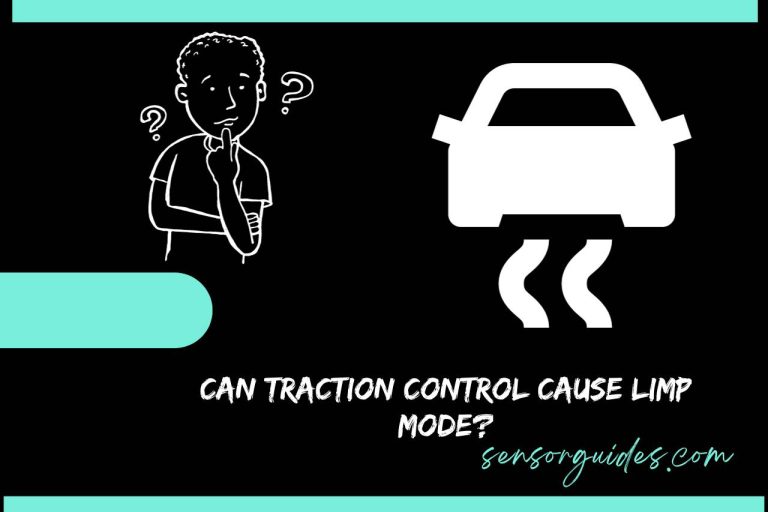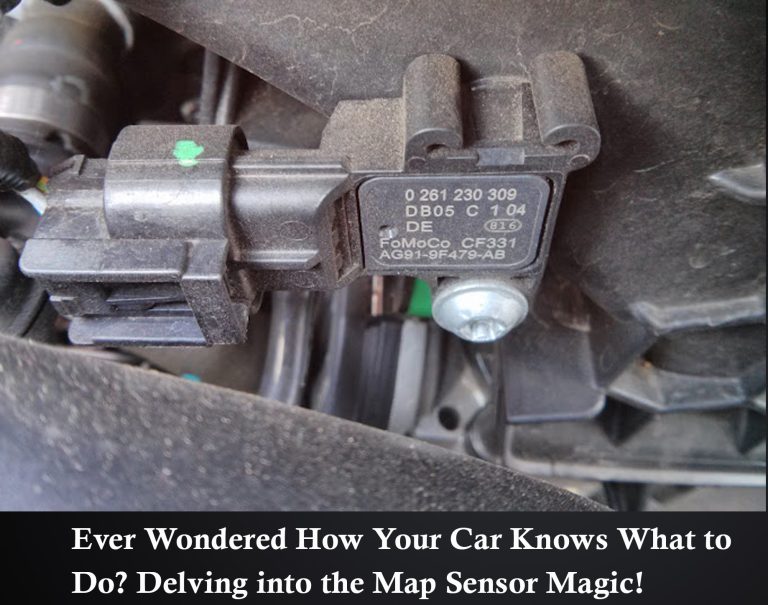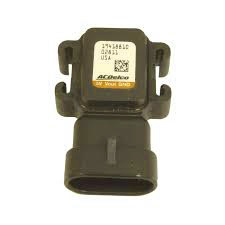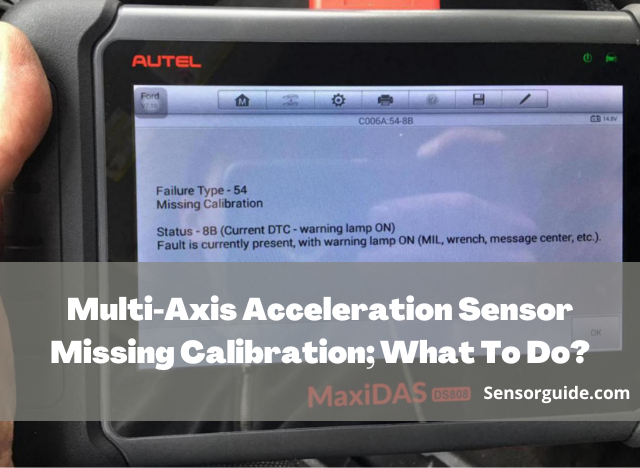Chevy Chronicles: Decoding Map Sensor Chevy Silverado for Smooth Rides! – 2023
Introduction
Importance of Map Sensors
In the area of automotive engineering, the manifold absolute stress (MAP) sensor plays a important role in ensuring most fulfilling engine performance. This sensor, a essential aspect of the engine control gadget, continuously monitors the pressure inside the intake manifold, presenting treasured statistics to the engine manipulate unit (ECU). The ECU, in flip, makes use of this records to modify gasoline injection and ignition timing, ensuring efficient combustion and maximizing engine output.
Overview of Chevy Silverado’s Engine Management
The Chevy Silverado, a famend pickup truck, employs an advanced engine management system that seamlessly integrates various sensors to attain top-quality engine performance. Among those sensors, the MAP sensor stands out as a key participant, continuously tracking the air stress in the intake manifold. This information is then relayed to the ECU, which dynamically adjusts gasoline shipping and ignition timing to preserve the right air-gasoline aggregate and make sure efficient combustion. The MAP sensor, therefore, performs a pivotal role within the Chevy Silverado’s engine control device, contributing to fuel efficiency, power output, and normal vehicle performance.

What is a Map Sensor?
Definition and Purpose
Map Sensor Chevy Silverado : A MAP sensor, or manifold absolute stress sensor, is a important factor of an inner combustion engine’s digital manage gadget. Its number one function is to degree the absolute stress of the air in the consumption manifold, that is the location in which air is accumulated and blended with gas earlier than getting into the engine’s cylinders. This strain size presents valuable facts about the engine’s air consumption and load, allowing the engine manipulate unit (ECU) to optimize gas injection and ignition timing for top-rated overall performance.
Role in Engine Performance – Map Sensor Chevy Silverado
The MAP sensor plays a essential role in making sure green and powerful engine operation. By constantly tracking consumption manifold pressure, the sensor offers real-time comments to the ECU, allowing it to make particular modifications to gas delivery and ignition timing. These changes, in turn, have an effect on the air-gasoline aggregate, ensuring that the engine receives the most fulfilling amount of gasoline for correct combustion.

Understanding Pressure Measurements – Map Sensor Chevy Silverado
The MAP sensor measures absolutely the stress of the air within the consumption manifold, that is the whole strain exerted by means of the air molecules. This measurement is expressed in gadgets of kilopascals (kPa) or kilos in keeping with square inch (PSI). The absolute stress within the intake manifold varies depending on several elements, which include engine pace, throttle role, and atmospheric strain.
- Engine Speed: As engine velocity increases, the intake manifold stress decreases because of the increased rate of air intake.
- Throttle Position: Opening the throttle lets in greater air to enter the consumption manifold, resulting in a decrease in pressure. Conversely, last the throttle restricts air consumption, main to an growth in pressure.
- Atmospheric Pressure: Changes in atmospheric strain, including those encountered when riding at exceptional altitudes, can also affect intake manifold stress.
The MAP sensor’s capability to accurately degree those strain versions is important for the ECU to decide the precise fuel injection and ignition timing. By thinking about those factors, the ECU can optimize engine performance across a wide range of running situations.

Evolution of Map Sensor Chevy Silverado
Technological Advancements
The MAP sensor has gone through enormous technological improvements considering the fact that its creation within the car enterprise. These advancements have led to stepped forward accuracy, reliability, and durability, making the MAP sensor an critical thing of present day engine management systems.
- Sensor Design: Early MAP sensors utilized a diaphragm-primarily based design, which, at the same time as effective, became vulnerable to wear and tear. Modern MAP sensors rent solid-state era, providing advanced accuracy and long-time period reliability.
- Signal Processing: The processing of MAP sensor signals has additionally developed through the years. Early systems trusted analog circuitry, which can be affected by environmental elements. Modern systems utilize virtual signal processing, making sure steady and reliable information transmission.
- Calibration: The calibration of MAP sensors has also come to be more specific and green. Early sensors required guide calibration methods, while modern sensors are self-calibrating, lowering the need for maintenance and making sure most fulfilling overall performance at some stage in their lifespan.
Impact on Fuel Efficiency
The evolution of MAP sensors has had a profound impact on gas efficiency. More accurate and dependable pressure measurements allow the ECU to optimize gas injection and ignition timing with more precision. This optimization results in a greater green combustion manner, lowering gas consumption and improving normal gasoline economy.
- Precise Fuel Injection: Accurate MAP sensor records allows the ECU to inject the exact amount of gasoline required for ideal combustion. This precision prevents overfueling, which could result in wasted fuel and reduced efficiency.
- Dynamic Ignition Timing: The MAP sensor’s capability to degree strain versions permits the ECU to alter ignition timing dynamically. This dynamic adjustment ensures that the fuel-air mixture ignites at the most reliable time, maximizing combustion performance and decreasing gasoline consumption.
- Overall Efficiency Gains: The combined consequences of precise fuel injection and dynamic ignition timing cause massive improvements in gasoline efficiency. Modern MAP sensors have performed a vital role in achieving the fuel economy gains determined in latest generations of Chevy Silverado trucks.
Importance of MAP Sensors in Engine Efficiency
Fuel-Air Mixture Optimization
The MAP sensor performs a essential position in optimizing the air-gasoline aggregate, a crucial thing in engine efficiency. By as it should be measuring intake manifold pressure, the MAP sensor gives real-time statistics to the ECU, allowing it to alter gasoline injection hence.
- Air-Fuel Ratio: The ideal air-gasoline ratio, normally round 14.7:1, guarantees whole combustion, maximizing power output and minimizing gas intake. The MAP sensor helps preserve this best ratio by using offering accurate pressure readings.
- Sensor Sensitivity: The MAP sensor’s high sensitivity permits it to stumble on even diffused modifications in intake manifold stress, permitting the ECU to make particular changes to gas injection. This precision ensures that the engine operates on the gold standard air-gas ratio, maximizing performance.
- Adaptive Control: The MAP sensor’s actual-time records transmission permits the ECU to adapt fuel injection strategies based totally on changing engine situations. This adaptive manage ensures that the air-gasoline mixture stays optimized across a extensive range of working parameters.
Enhancing Horsepower and Torque – Map Sensor Chevy Silverado
The MAP sensor’s contribution to fuel-air mixture optimization also has a positive impact on engine performance. By ensuring that the engine receives the optimal amount of fuel for combustion, the MAP sensor contributes to increased horsepower and torque output.
- Power Gains: Optimized fuel injection, resulting from accurate MAP sensor data, leads to more efficient combustion, generating greater power output. This power gain is particularly noticeable during acceleration and high-load conditions.
- Torque Enhancement: The MAP sensor’s ability to maintain the ideal air-fuel ratio also contributes to improved torque, the measure of an engine’s twisting force. This enhanced torque provides better acceleration and responsiveness, making for a more enjoyable driving experience.
Overall, the MAP sensor plays a crucial role in optimizing engine efficiency by providing accurate intake manifold pressure data, enabling the ECU to optimize fuel injection and ignition timing. These optimized parameters lead to improved fuel economy, increased horsepower, and enhanced torque, making the MAP sensor an indispensable component of modern engine management systems.
How Map Sensors Work in Chevy Silverado
Sensor Placement
The MAP sensor is normally installed at the consumption manifold, a component that collects air earlier than it enters the engine’s cylinders. This placement allows the sensor to without delay measure the stress of the air getting into the engine, providing accurate facts to the ECU.
The unique region of the MAP sensor may additionally range depending at the version yr and engine configuration of the Chevy Silverado. However, it’s far commonly found in a effectively reachable vicinity, making it extraordinarily clean to look at and update if necessary.
Data Collection Process
The MAP sensor continuously video display units the pressure of the air inside the consumption manifold using a diaphragm or a piezoresistive element. These elements respond to modifications in stress, generating an electrical sign this is proportional to the stress stage.
- Diaphragm-Based Sensors: Diaphragm-primarily based MAP sensors utilize a skinny, flexible diaphragm that deflects in response to stress adjustments. This deflection is then converted into an electrical sign the use of a potentiometer or different mechanical transducer.
- Piezoresistive Sensors: Piezoresistive MAP sensors employ a silicon chip with a pressure gauge. As the strain modifications, the stress gauge experiences physical deformation, changing its electrical resistance. This change in resistance is then measured and transformed into an electrical sign. The electrical signal generated by way of the MAP sensor is transmitted to the ECU, which translates the sign and utilizes the statistics to regulate engine parameters.
Conclusion – Map Sensor Chevy Silverado
The manifold absolute strain (MAP) sensor performs a vital role in modern-day engine control structures, together with the only determined inside the Chevy Silverado. By accurately measuring the stress of the air entering the engine, the MAP sensor affords treasured facts to the engine control unit (ECU), permitting it to optimize fuel injection, ignition timing, and normal engine overall performance.
The evolution of MAP sensors has caused widespread upgrades in accuracy, reliability, and sturdiness, making them critical additives of present day engine management structures. Their contributions to gasoline efficiency, electricity output, and torque are sizeable, making them fundamental for attaining highest quality engine overall performance and efficiency.
FAQs – Map Sensor Chevy Silverado
What are the signs and symptoms of a faulty MAP sensor?
Symptoms of a faulty MAP sensor can include:
- Rough idle
- Reduced power output
- Increased fuel intake
- Hesitation or stalling
How can I diagnose a defective MAP sensor?
Diagnosing a faulty MAP sensor normally includes a two-step method:
Initial inspection: A visual inspection of the MAP sensor and its electrical connections can now and again monitor apparent symptoms of harm or corrosion.
Sensor trying out: More in-depth testing might also involve the use of specialised diagnostic equipment to degree the MAP sensor’s output voltage and compare it to recognized specs. This trying out can help decide if the sensor is imparting correct stress readings.
How can I prevent MAP sensor problems?
Regular maintenance and inspection can help save you MAP sensor problems. This includes:
- Checking the MAP sensor for harm or corrosion
- Cleaning the MAP sensor connector
- Replacing the MAP sensor if it’s far broken or worn
How often ought to I update my MAP sensor?
The frequency of MAP sensor alternative depends on different factors, including using conditions and upkeep practices. However, it is usually encouraged to update the MAP sensor every 50,000 to 100,000 miles.
Can I smooth my MAP sensor?
Yes, you may clean your MAP sensor using a specialised MAP sensor cleaner. However, if the sensor is damaged or worn, it need to be replaced.





